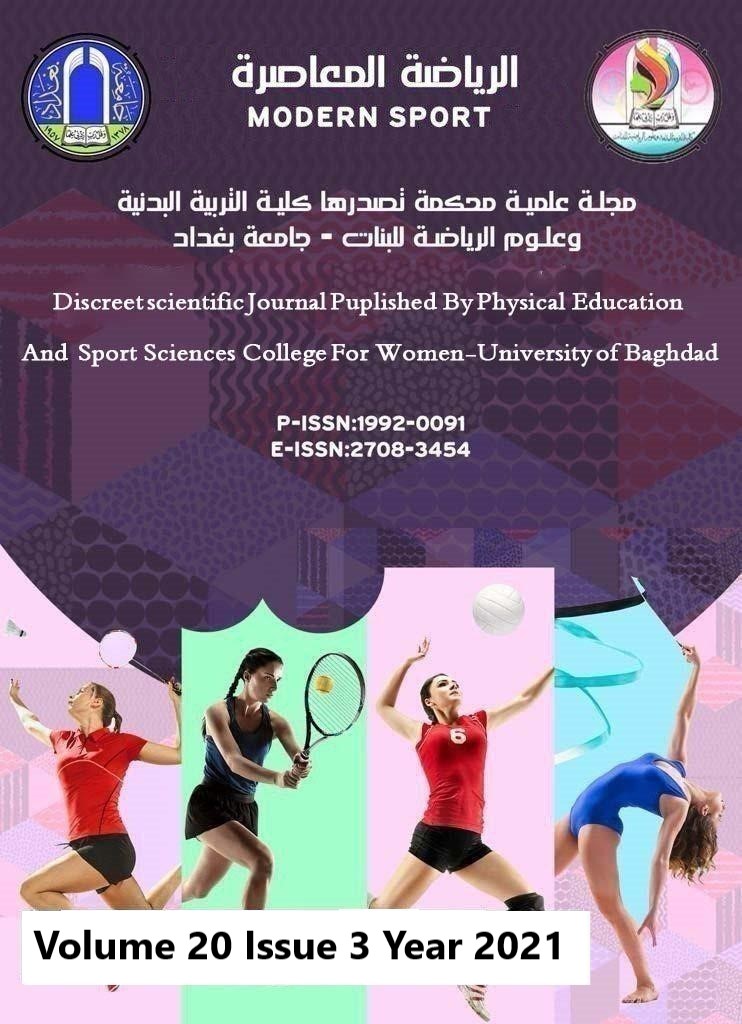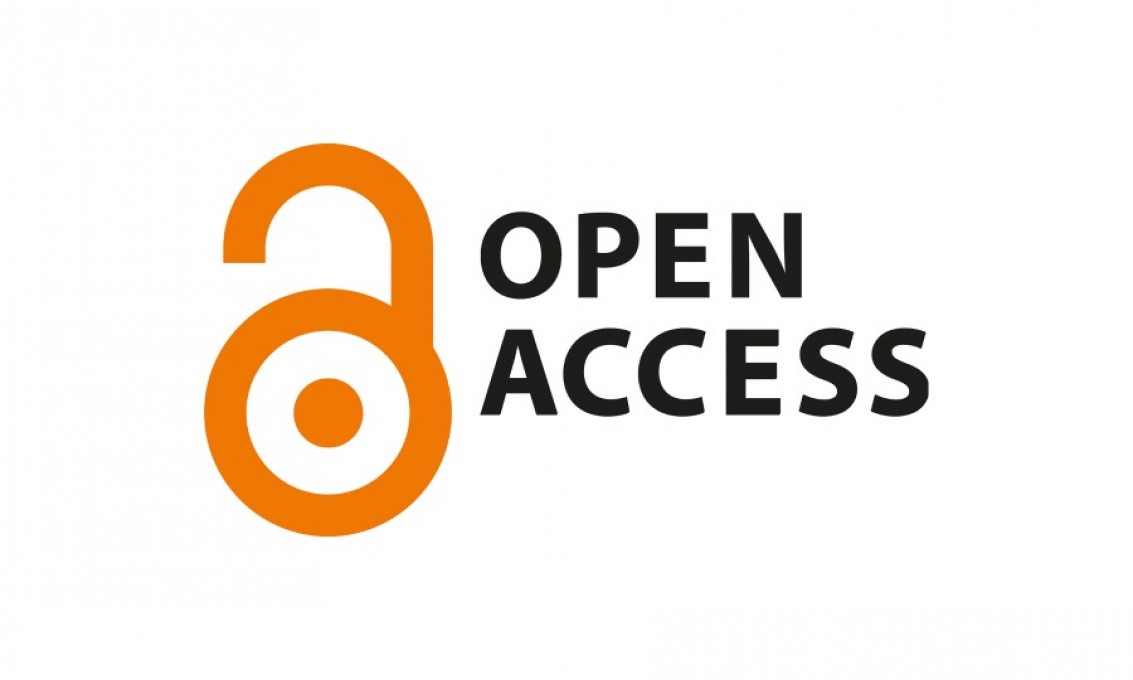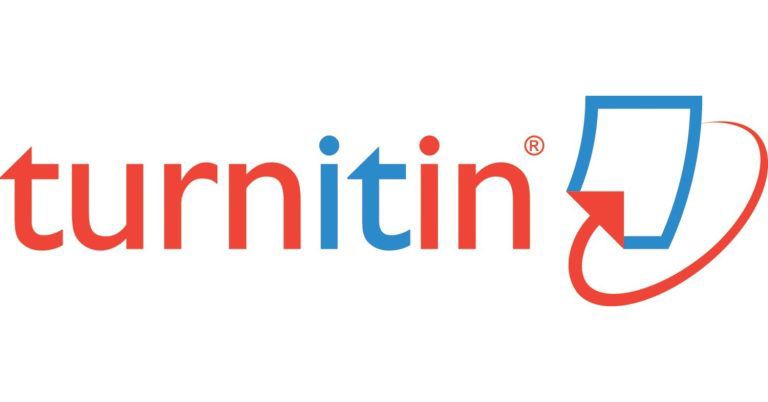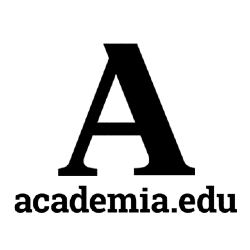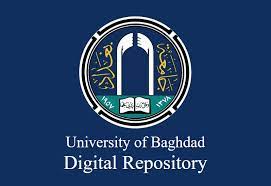تأثير استراتيجية التعلم من اجل التمكن في اداء مهارة الاعداد بالكرة الطائرة للطالبات
DOI:
https://doi.org/10.54702/msj.2021.20.3.0089الكلمات المفتاحية:
استراتيجية التعلم من اجل التمكنالملخص
هدف البحث الى التعرف على مدى تأثير استراتيجية التعلم من اجل التمكن في تعلم مهارة الاعداد بالكرة الطائرة للطالبات، وافترض الباحثان بانه لاتوجد فروق ذات دلالة احصائية بين الاختبارين القبلي والبعدي وللمجموعتين الضابطة والتجريبية اضافة للاختبار البعدي بعدي في متغير الدراسة، واستخدم التصميم التجريبي للمجموعتين المتكافئة التجريبية والضابطة لغرض المقارنة، وحددت عينة البحث بعد استبعاد الطالبات الراسبات والممارسات للعبة ليصبح العدد الكلي للعينة (40) طالبة بواقع (20) طالبة لكل مجموعة، واستغرقت مدة المنهج (3) اسابيع بواقع وحدتين تعليمية لكل اسبوع في يومي (الاحد, الاثنين) بحيث اصبح العدد الكلي للوحدات 6) وحدات تعليمية، وتم تنفيذ المنهج بإعطاء مدة (1) ساعة الإلكتروني التعلم عن طريق أسلوب الحاسوب وكانت مدة الوحدة التعليمية (60) دقيقة واستخدم الحقيبة الاحصائية للعلوم النظرية (SPSS) لاستخراج (الوسط الحسابي، الوسيط، الانحراف المعياري، معامل الالتواء، اختبار (T-test) للعينات المرتبطة، اختبار (T-test) للعينات المستقلة، واستنتج بان اثبتت الستراتيجية فاعليتها في مهارة الاعداد للطالبات بمستوى اكبر من الاسلوب التقليدي، ومستوى التطور لمتغيرات الدراسة والدلالات الاحصائية في المجموعة التجريبية اكبر من مستوى التطور والدلالات الاحصائية في المجموعة الضابطة، وتزداد فاعلية التعلم والتطور مع استخدام التقنيات الصورية والفيديوية ووسائل الاتصال لانها توفر مجالا كبيرا للمراجعة ومعرفة الاخطاء واعادتها وتعزز التغذية الراجعة لهن، والتوصيات بضرورة استخدام ستراتيجية التعلم من اجل التمكن في مهارات اخرى تحتاج الى قابليات مهارية اكثر تعقيدا مثل الضرب الساحق وحائط الصد والدفاع عن الملعب، وضروة زيادة استخدام الوسائل الحديثة الصورية والفيديوية وتقنيات الحاسوب لانها تزيد من التغذية الراجعة وتعزز التعلم وذلك يشمل حتى الاساليب التقليدية في التعلم لتكون اكثر فاعلية.
المراجع
- Haider Fadhil Salih; (2014), The impact of the two styles of learning for mastery and self-learning on the accuracy of performance and retention of some basic skills in volleyball. master thesis, Basic Education College, Diyala University, P:14.
- Rafid Mahdi, Haider Fadhil; (2015), The effect of using the learning style in order to be able to perform the skill of serving in volleyball. published research, Al-Fatih journal, Vol. 11, issue 61, P:200
- Riadh Hani Jawdah, Faris Hussein Khudhur; (2020), The effect of using the learning strategy for mastery with the help of the visual sense in learning some basic basketball skills for fifth graders. Published research, Anbar University Journal of Physical and Sports Sciences, Vol. 4, Issue 20, P:319.
- Sahir Ismael Madab Al-khazrajy; (2019), The effectiveness of the learning method for mastery in the level of technical performance and digital achievement of the long jump effectiveness, master thesis, Basic education College, Mosul University. P:19
- Akerele, J. A., & Afolabi, A. F.; (2012), Effect of video on the teaching of library studies among undergraduates in Adeyemi College of Education, Ondo. (Library Philosophy and Practice. e-journal): p680.
- B. J. Zimmerman and M. K. Dibenedetto; (2008), “Mastery learning and assessment: Implications for students and teachers in an era of high-stakes testing”, (Psychology in the Schools, vol. 45 no. 3), p208.
- Hulleman, C. S., Schrager, S. M., Bodmann, S. M., & Harackiewicz, J. M.; (2010), A metaanalytic review of achievement goal measures: Different labels for the same constructs or different constructs with similar labels? (Psychological Bulletin, 136), p447.
- King, R. B., Ganotice, F. A., & Watkins, D. A.; (2014), A cross-cultural analysis of achievement and social goals among Chinese and Filipino students. (Social Psychology of Education, 17), p453.
- Kristen, C. Schellhase.; (2008), “Applying mastery learning to athletic training education”, (Athletic Training Education Journal, vol. 3 no. 4), p131.
- Linnenbrink, E. A.; (2005), The dilemma of performance-approach goals: The use of multiple goal contexts to promote students’ motivation and learning. (Journal of Educational Psychology, 97), p210.
- Midgley, C., Kaplan, A., & Middleton, M.; (2001), Performance-approach goals: Good for what, for whom, under what circumstances, and at what cost? (Journal of Educational Psychology, 93), p83.
- Murayama, K., & Elliot, A. J.; (2012), The competition-performance relation: A metaanalytic review and test of the opposing process model of competition and performance. (Psychological Bulletin, 138), p165.
- Murtaza, A., Naseer Ud Din, M., & Khan, F.; (2011), Effects of audio visual aids in students learning at secondary levels in district Rawalpindi. (Interdisciplinary Journal of Contemporary Research in Business, 2(10)), p441.
- N. Othman, M. H. Amiruddin, and M. Mansor; (2011), “The entrepreneurial behavior of Orang Asli youths in south peninsular Malaysia”, (International Journal of Education and Information Technologies, vol. 1 no. 5), p131.
- Quarcoo-Nelson, R., Buabeng, I., & Osafo, D. K.; (2012), Impact of audio-visual aids on senior high school students’ achievement in physics. (Eurasian Journal of Physics and Chemistry Education, 4(1)), p46-54.
- R. J. Murphy, S. A. Gray, S. R. Straja, and M. C. Bogert; (2004), “Student learning preferences and teaching implications. Educational Methodologies”, (Journal of Dental Education, vol. 68 no.8), p231.
- Senko, C., Durik, A. M., Patel, L., Lovejoy, C. M., Valentiner, D., & Stang, M.; (2013), Achievement goal effects on performance under low versus high challenge conditions. (Learning & Instruction, 23), p6.
- T. R. Guskey; (2007), “Closing achievement gaps: revisiting Benjamin S. Bloom’s learning for mastery”, (Journal of Advanced Academics, vol. 19 no. 1), p27.
- Yeo, G., Loft, S., Xiao, T., & Kiewitz, C.; (2009), Goal orientations and performance: Differential relationships across levels of analysis and as a function of task demands. (Journal of Applied Psychology, 94), p725.
